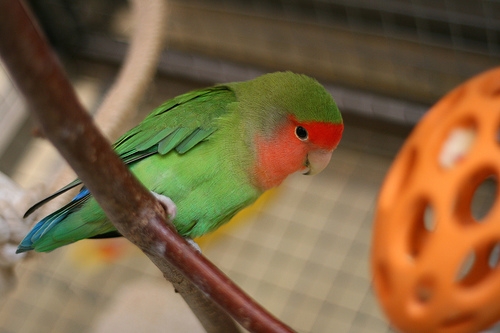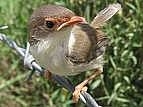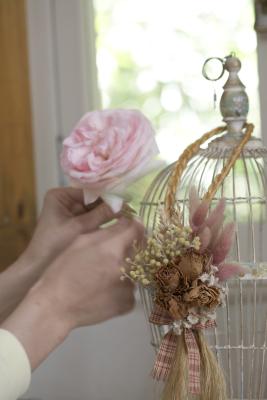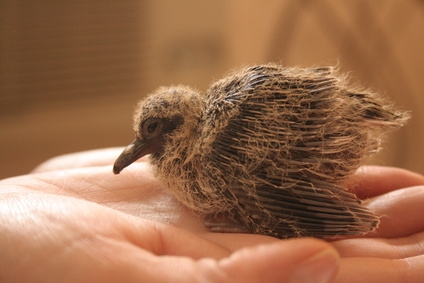
Rosellas are parrots and are endemic to Australia. Rosellas belong to the genus Platycercus meaning broad or flat-tailed. The Pale-Headed and the Eastern rosella both belong to the white- or pale-cheeked rosella group. It has the common names of white-cheeked rosella or rosella parakeet. Examples of the blue-cheeked group are the Green and the Adelaide rosellas.
The eastern rosella is found over a wide area of the east coast of Australia from Queensland through north-east New South Wales down to Victoria and south-east South Australia. It occurs in eastern Tasmania and there is an introduced population in New Zealand. Like the Adelaide rosella, it is now a regular visitor to many of Adelaide's parks and suburban gardens and, unfortunately, it also enjoys visiting orchards.

The natural habitat of the rosella is open woodlands and grasslands. It also frequents treed farmlands and remnant bushland. Parks, suburban gardens, golf courses and orchards are all home to this species.
This species is more easily sexed than most. The breadth of the beak of the male averages 12.9mm and thus much broader than that of the female at 10.5mm. The bird is between 28 and 32cm long and weighs between 110 and 135 grams.
 Australian Parrots - Their Habits in the Field and Aviary
Australian Parrots - Their Habits in the Field and AviaryThe plumage of the head, neck, breast and under the tail is red. The upper parts are dark with the feathers edged in bright yellow or green. The underneath plumage is yellow and the rump yellow- to blue-green. The shoulders are bright blue and there are distinctive white cheek patches. Females and juveniles have duller coloured plumage. Young birds have a yellow or orange beak. This becomes off-white as the bird matures.
This species is sedentary. Its flight pattern is an undulating movement close to the ground. As they land, they glide upwards, fanning the tail as they go.
In the wild, its diet consists of fruit, nectar, seeds, buds, blossoms and insects. It feeds mostly from the ground, foraging through lawns and clearings but also feeds in trees and bushes.
Australian Parrots, Third EditionThe eastern rosella chooses his mate for life. The breeding season extends from August to February. Rosellas like a tree hollow high above the ground in which to nest. A normal clutch is 4 to 7 white eggs laid on the naturally occurring wood chips or dust at the base of the hollow. The male feeds the female while she sits on the eggs fro about three weeks. Youngsters fledge at five weeks and are independent in another two to three weeks.
As an aviary bird, the eastern rosella is a bird to be proud of. Rosellas love to fly so they are very appreciative of being able to fly in their aviary. They like their baths and in the wild will have baths in puddles along the roadsides. They need to be housed each pair to a cage as they fight otherwise. They breed well in captivity but you'll need another cage so you can move the young birds out. They love a fresh branch or two to chew on. This will give their beak and claws some exercise and keep them occupied for a while. As they like to chew on wood, a metal cage is best.
 How to Decorate Bird Cages
How to Decorate Bird Cages
How to Deco
How to Decorate Bird Cages
How to Decorate Bird Cages
How to Deco
 How to Make Squirrel Proof Bird Food Seed
How to Make Squirrel Proof Bird Food Seed
How to Make Squirrel Proof Bird Food Seed
How to Make Squirrel Proof Bird Food Seed
 Ways to Decorate a Bird Cage
Ways to Decorate a Bird Cage
Ways to D
Ways to Decorate a Bird Cage
Ways to Decorate a Bird Cage
Ways to D
 Perfect Travel Destinations With Travellers Aged In Excess Of 80
Person stage is a persons age when oldies have all their t
Perfect Travel Destinations With Travellers Aged In Excess Of 80
Person stage is a persons age when oldies have all their t
 How to Take Care of Wild Baby Birds
How to Take Care of Wild Baby Birds
Ho
How to Take Care of Wild Baby Birds
How to Take Care of Wild Baby Birds
Ho
Copyright © 2005-2016 Pet Information All Rights Reserved
Contact us: www162date@outlook.com